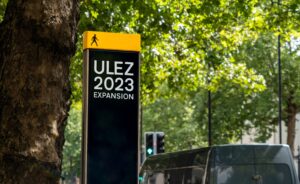Stephanie Trotter, OBE, President & Director of CO-Gas Safety responds to a recent interview that Air Quality News published with Baroness Finlay.
Finlay mentioned a recent report published by the Clean Air Fund that found that reducing pollution to World Health Organisation (WHO) recommended levels could benefit the UK economy by £1.6bn annually by reducing premature deaths, reducing sickness absence, and improving productivity at work.
We were delighted by Finlay’s concern about air pollution damaging health. We agree, ‘There are no ‘safe levels’ of air pollution, whether that is indoors or outdoors. Air pollutants are present in every home’.
We also applaud Baroness Finlay’s concern for the indoor environment where toxins are much more concentrated yet can be prevented. Brits spend over 90% of their time indoors.
Some quick wins on raising awareness and testing for carbon monoxide could be made by testing for carbon monoxide.
At the Air Quality News conference, when questioned, Finlay expressed concern about the cost of testing the air for CO.
CO-Gas Safety understands the need to show a cost-benefit. But the known deaths and injuries from CO cost the UK taxpayer £178m a year. Most agree that the known deaths & injuries from unintentional CO are only the tip of an iceberg.
Ofgem, which licenses the gas industry has made millions available for the benefit of vulnerable customers. This means those on or eligible for the Priority Service Register, (e.g. the disabled, poor, sick, elderly, etc.). But Jonathan Brierley, CEO of Ofgem admitted to CO-Gas Safety that everyone is vulnerable to CO.
Northern Gas Networks undertook research that established testing appliances for CO only adds 5-7 minutes on to every visit by the gas emergency service.
Therefore, the funds exist and the research has been done. Also, if HSE told Ofgem that testing for CO is a safety issue (and how can it not be?), Ofgem would find any further funding required. It is surely vital to find the source of the CO.
Why are free tests of the air in homes for deadly CO not being provided at every opportunity?
Finlay’s own recommendations in 2011 advocated testing. APPCOG has, in the past, supported our call for compulsory testing as part of the landlord’s gas safety check.
Sadly, the gas emergency service which attends free and tests for a leak of unburned gas (which you can smell) is not required to test for CO (and you can’t smell CO). We’ve been lobbying since 1995 for this to be changed. We’re also lobbying for a levy on the whole fuel industry to pay for raising awareness of the dangers of CO, testing, collecting data, research, and survivor support which we, as a tiny, unfunded charity cannot provide.
Phil Burrows of Cadent, one of the four providers of the gas emergency service, has recently told us ‘Cadent launched a pilot programme for vulnerable customers in April 2021. Some of Cadent’s engineers, qualified under CMDDA, test gas appliances for CO. If the source of CO is found, action is taken to make the emitting appliance safe. This keeps the customer safe and warm in their home.’
We congratulate Phil and Cadent. But do survivors have proof of CO in writing/digitally to give their medics?
To identify the source of the CO and have proof for the medics would transform the lives of survivors and their medics, as well as save NHS funds, help raise awareness, provide data and improve safety.
Let’s hope all the emergency service providers follow Cadent’s good example because however wealthy, wise and competent a person may be, everyone is vulnerable to CO, even those in the gas industry and MPs.
Stephanie Trotter, OBE, President & Director of CO-Gas Safety, Safety Lobbyist & Barrister (not practising at the moment).

















Leave a Reply